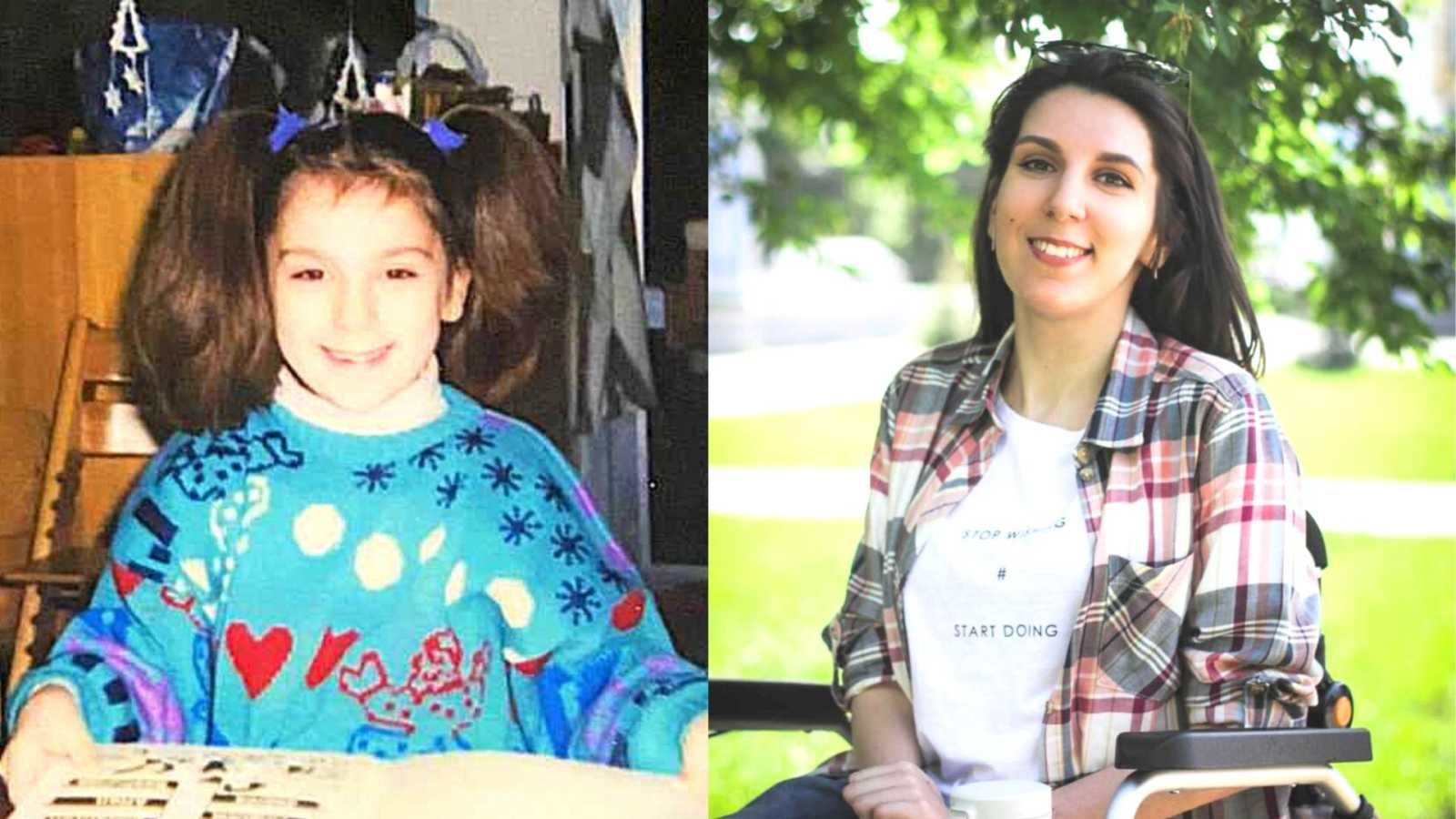“Giving a glimpse into a personal Spinal Muscular Atrophy (SMA) story is always a bit of mental nudity. You know the way it goes in the nightmares from the teenage comedies. You’re standing on stage in the blinding spotlight, getting ready to leave the audience open-mouthed with your TED Talk type of speech, and suddenly discover — to your absolute horror — you’re, in fact, wearing nothing but a cross pendant.
In a nutshell, talking about your own relationship with Spinal Muscular Atrophy is not a walk in the park.

This rare genetic disease, speaking scientifically, ‘affects nerve cells in the spinal cord that control muscles, as well as other cells throughout the body causing muscle wasting (i.e. atrophy).’ It slowly but surely robs you of your strength and physical abilities, and it reminds me of roommates from hell. They just hang around all day doing nothing, blasting death metal at night and not bothering to put on the headphones, making a post-apocalyptic mess in every room they walk in, and generally doing things solely to annoy you.
If they move into your life early on, the adaptation process might be less traumatizing, as you have nothing to compare it to. After all, you had no idea the roommates could be way nicer and your entire home space could belong to you only. Use it as you damn please.
In my case, my ‘roommate’ moved in with me on a permanent basis when I was about to hit puberty. Up to that point, the SMA had been actively moving bits and pieces of its stuff and furniture to my house, making its presence known and mentally preparing me for the inevitable, yet no less repulsive cohabitation.
To paint a less metaphorical picture, I got my diagnosis at the tender age of four, back in the early 90’s. Interestingly, a bunch of doctors believed my funky walk and frequent falls were just a minor orthopedic issue. The flat foot, to be exact. They claimed I was perfectly healthy otherwise, and my mom’s worries were ‘all in her head.’ Following numerous physical examinations, tests, and appointments with various specialists (some of whom had very little knowledge of what SMA was all about) it was established I, in fact, have Spinal Muscular Atrophy Type 3.
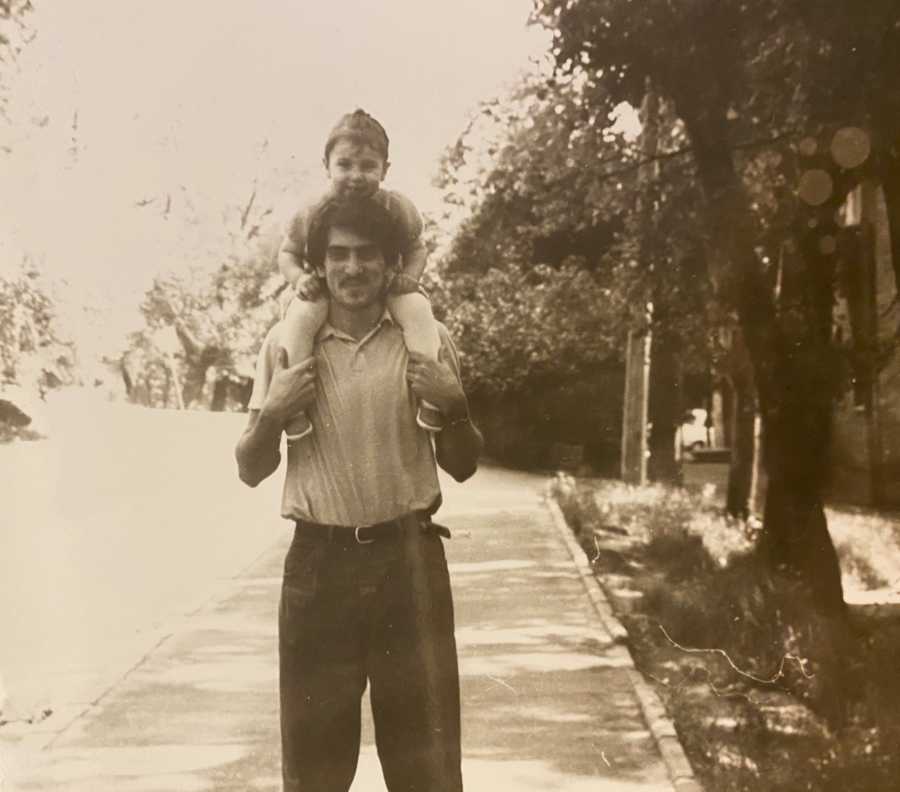
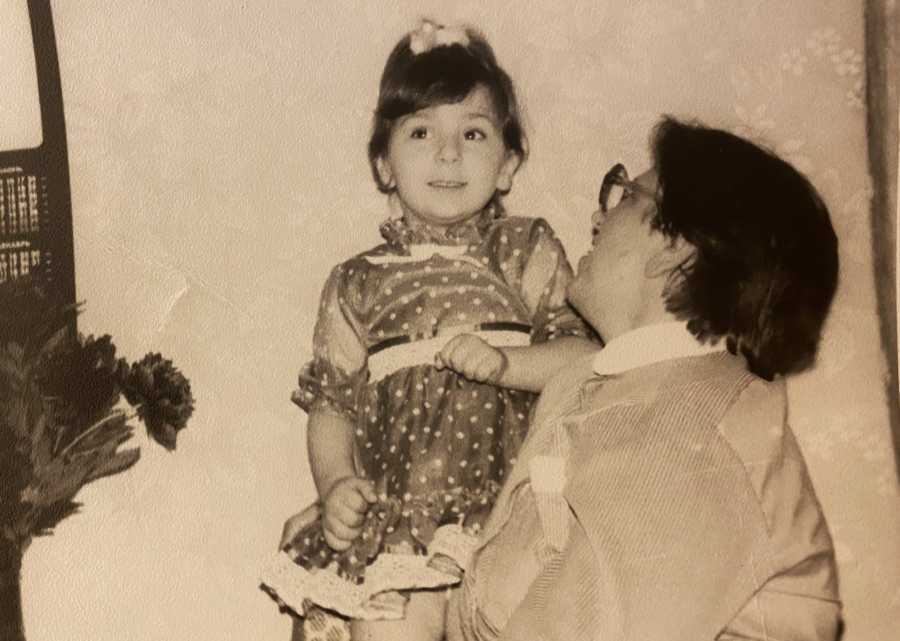
Even though it’s a milder form out of the four, and doesn’t necessarily affect life expectancy, I remember what one of the physicians told my mom at her office. ‘Your daughter has a rare degenerative disease, so don’t expect her to turn 18. I’d recommend having another baby.’ As you would imagine, my fantastic parents had a very different plan.
An outstanding neurologist, with whom we shared the same first name, and who was the one to actually confirm my diagnosis, advised my mother to seek further medical assistance overseas, as Ukraine didn’t offer any. And that’s exactly what my parents did.
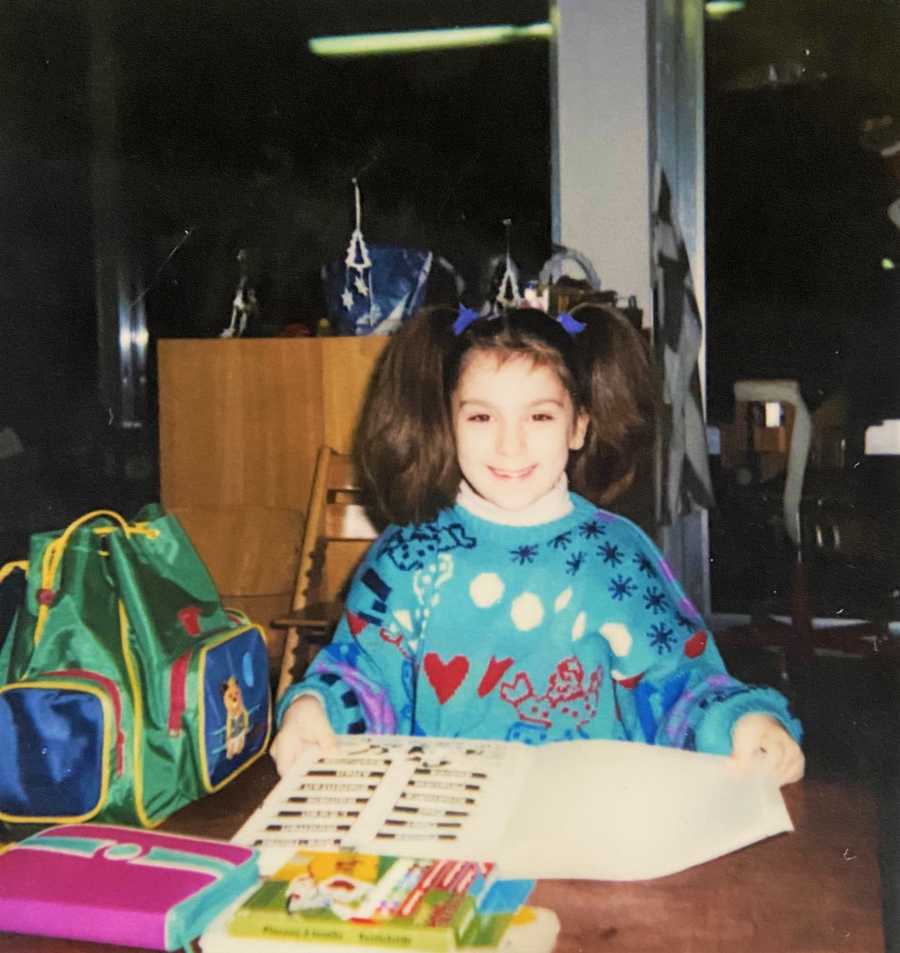
We ended up at the Diakonie clinic in Bad Kreuznach, Germany. There I got examined and tested again. It was still SMA. Shocker, I know! I was getting relevant treatment, which back in the day, primarily included physical therapy and living my best life as the only Ukrainian kid in my German elementary school. I got my first-ever foot braces, which helped me walk and climb the stairs like nobody’s business. No more wobbly feet, no more falls and scraped knees, no more ‘Zelenka’ (antiseptic green dye). Hooray! Given the overall slow progress of the illness, and the abilities I preserved at the age of seven, the doctors’ prognosis looked incredibly optimistic.


However, SMA welcomed me with open arms shortly after we returned back to Ukraine. The periods of my ‘downtime,’ due to respiratory complications caused by simple colds, were becoming more frequent. My muscles were losing their strength, as if betraying me. Foot braces grew taller, more heavy-duty, and eventually reached up to my thighs. I still vividly recall each time I got a new pair and had to ‘break it in.’ I would pace our living room back and forth till the sweat dripped and tears rolled. With each shaky step I took, I would chant my trusted mantra — ‘I want, I can’ — to myself. And, my ever-present support team would chant along with me.
In middle school, I had to switch to remote-schooling, since attending classes every day was no longer an option. In the late 90’s and early 2000’s, Ukraine still lacked accessibility, as far as education was concerned. Despite having my schedule fully packed with studies, academic competitions, private tutors, PT sessions, massages aimed at holding off the progression of the disease, and having friends and family by my side, the feeling of isolation and internalized ableism still crept in and ate at me as if I was a delicious slice of cake.
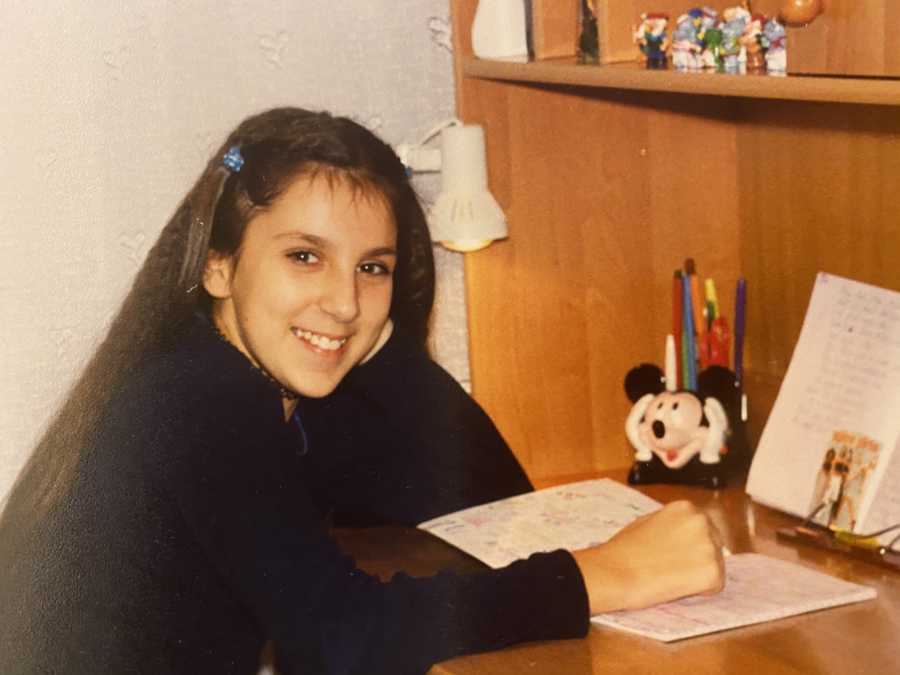
All of the above made things crystal clear to me. This, ALL OF THIS, baby, will from now on be a part of your routine, your new reality. Take it or leave it.
That being said, I couldn’t possibly forget the way my ‘BEFORE’ looked. And it was glorious. This is why accepting the rapid deterioration of my condition hit me like a few heavy-loaded trucks.
Probably one of the most traumatic experiences was making peace with the need to use a wheelchair, and realizing — oh, dear God! — those who haven’t seen me in a while will find out I’m ‘so obviously disabled’ now. Saying I was mortified the first time I showed up at the university using my wheelchair would be a lousy understatement. At the time, I was dead sure using a wheelchair was nothing but a white flag thrown up amidst the battle, loudly informing the world of my complete, unconditional defeat… Bitter and bewildering.
If I had a chance to make a quantum leap back into the past, I would tell my younger self it was hardly a defeat. I would hug that Katya and gently reassure her, ‘This is your first major victory over your fears. This is your step toward greater freedom and independence, confidence, inner strength, and acceptance. One of the many steps leading to a series of small victories waiting on you in the years to come.’
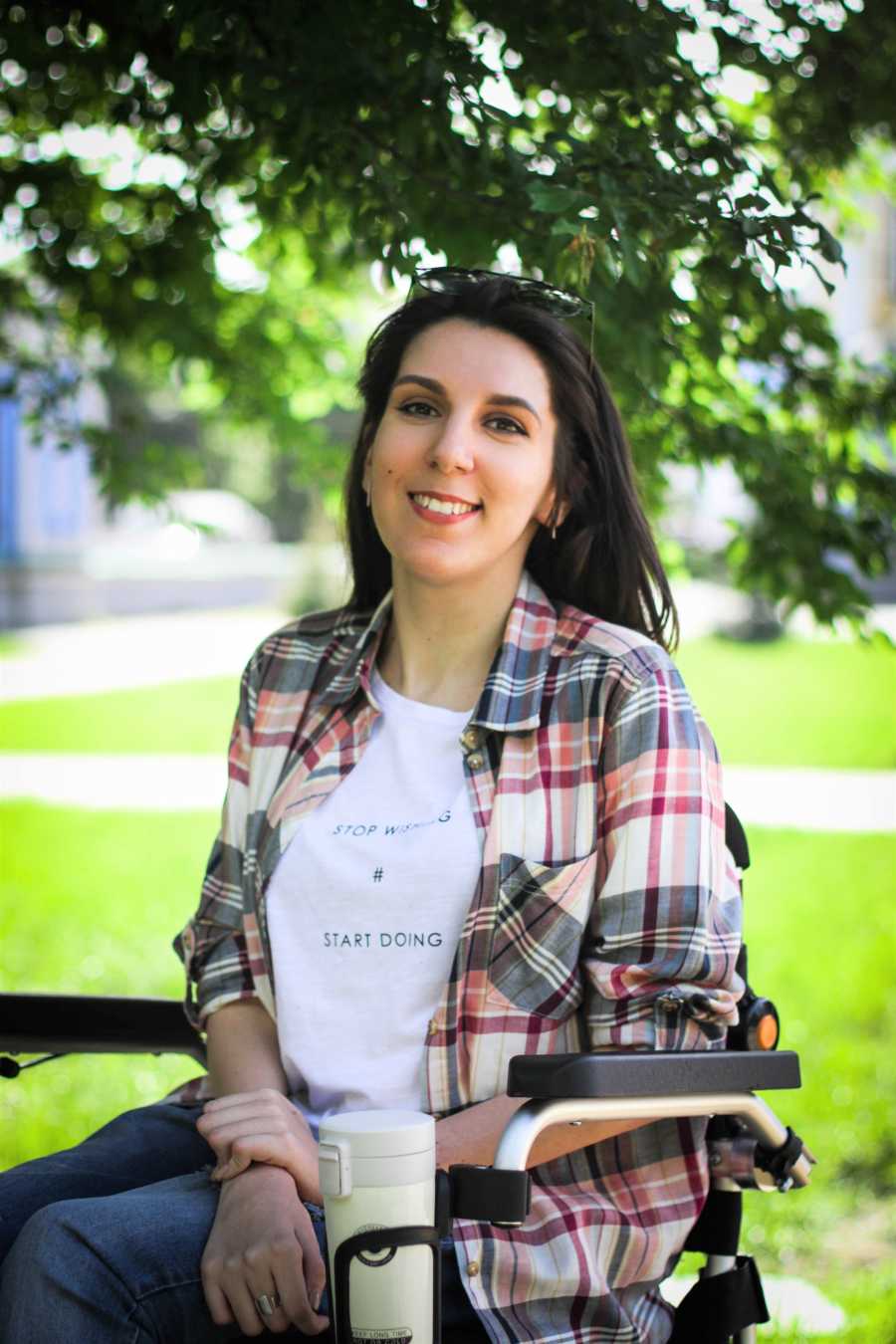

Despite the constantly rotating carousel of physiotherapy, the newly-emerging challenges, having to deal with health setbacks and mourning the gradual loss of physical abilities, I graduated at the top of my class from one of the best gymnasiums in Kyiv. I got my master’s with honors and have been juggling jobs since I was 18. I am currently working as a content translator and copywriter for the Digital Agency, advocating for people with disabilities, and have no intention of slowing down as long as I can. Don’t get me wrong, though. I’m not trying to brag here, but rather demonstrate all this is still very much possible when you are living with SMA.
I love doing photography, even though holding a chunky camera feels like doing 50 push-ups straight and lifting weights, or both… I did a photo project with a fellow photographer, Sergiy Kuzmich, aimed at drawing attention to urban infrastructure’s inaccessibility. A lot of people in Ukraine used to be basically trapped inside their apartments, and often still are. Essentially, it left the impression that people with disabilities didn’t exist in the first place. Therefore, ‘Such People Don’t Exist’ was the name of the project, and the white faceless mannequin in a wheelchair served as a symbol of that invisibility.
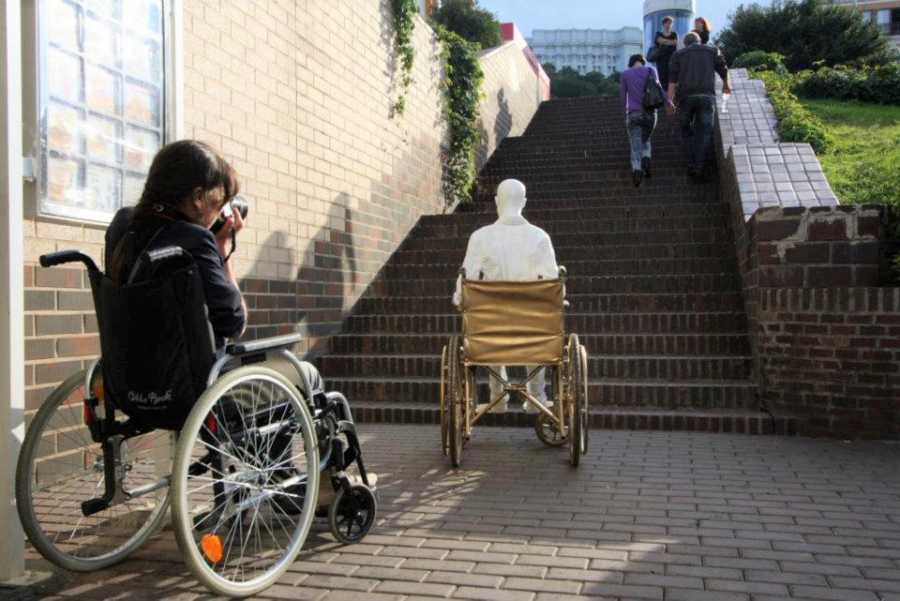
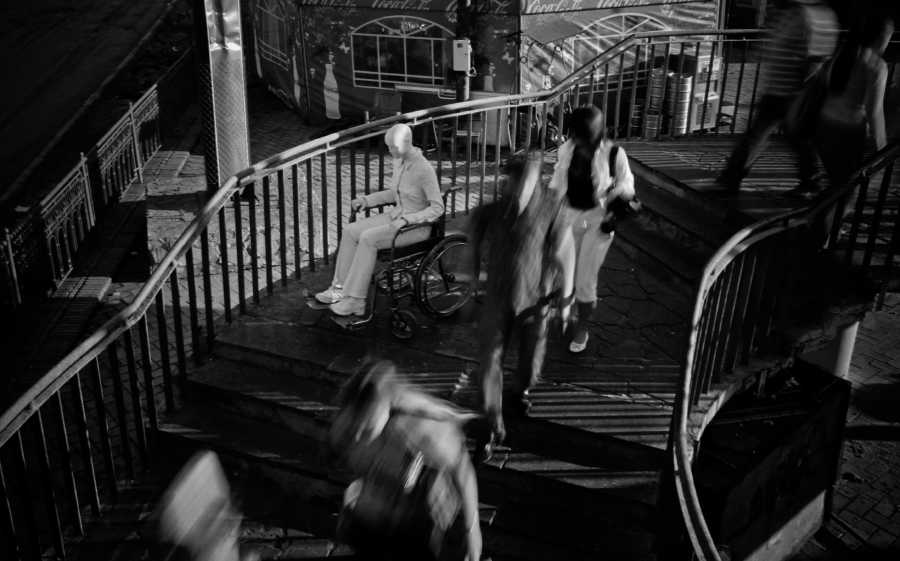
I’ve recently fallen in love with watercolors, which has become my ultimate meditation. It does, however, leave my hands feeling sore and lifeless once each drawing is complete. Well, just like a ton of other regular activities after which I need to regain the energy at the speed of a garden snail.
The SMA turns us into experts at flexibility, adaptability, extra patience, and resilience. SMA teaches you to look for new creative ways to accomplish the simplest of things that used to come so effortlessly before, but now can be compared to climbing up the mountain peaks. For the simple reason ‘your body forgot how to body,’ as my very dear friend once poetically put it.
I obviously wouldn’t be able to get where I am in life today without the immense support system that is my family and friends.
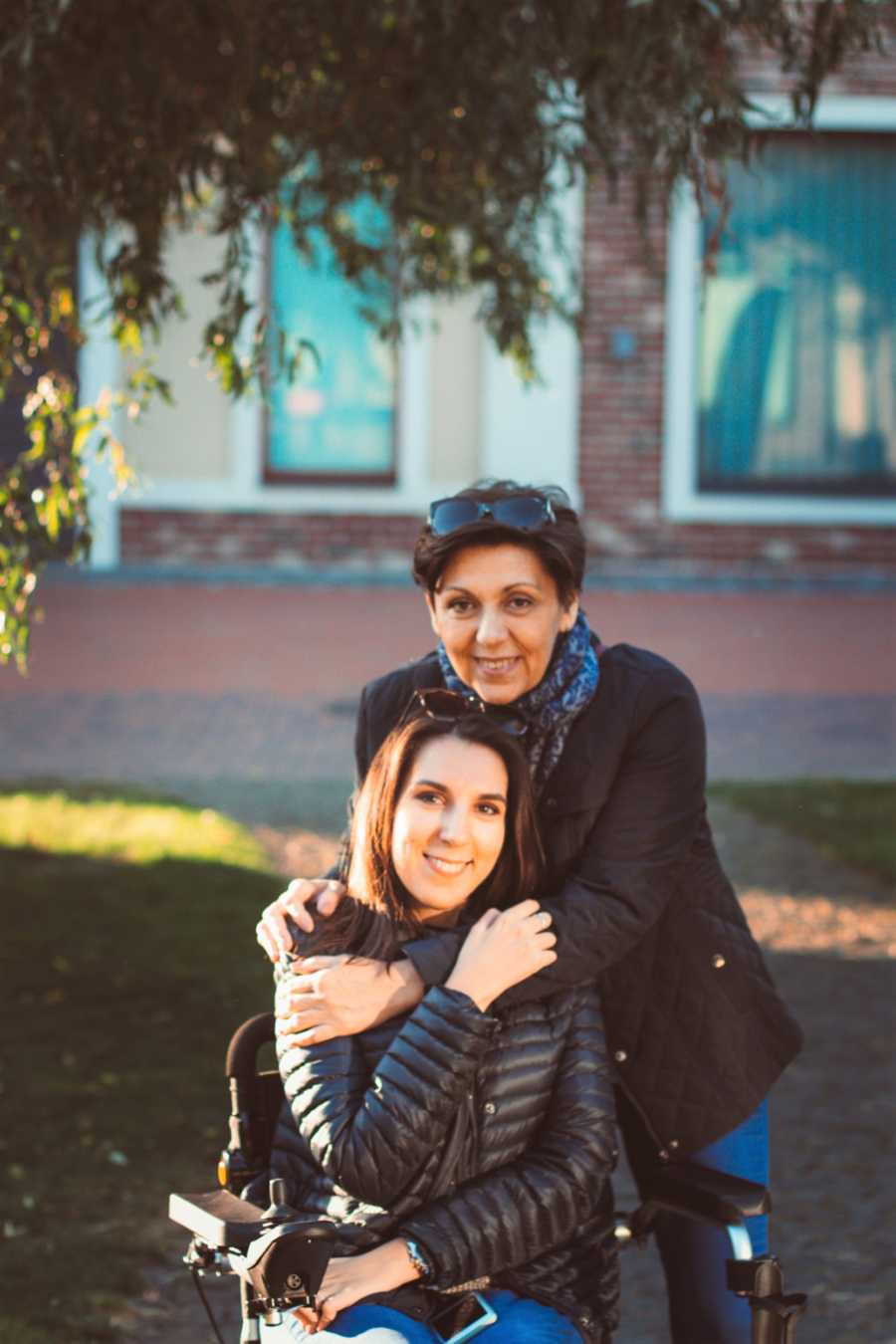
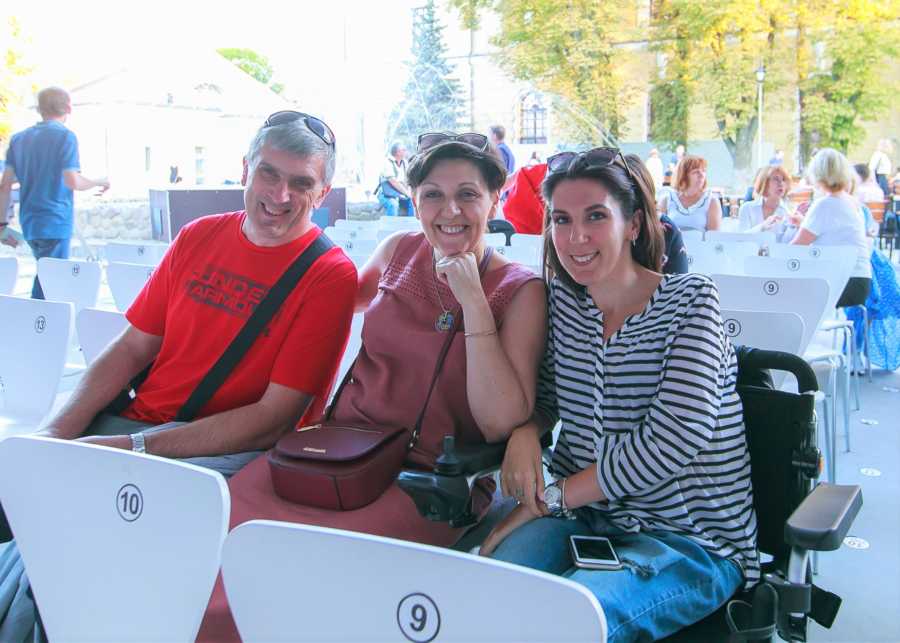
However, as the years went by, I came to the realization none of them are going to help you find the path to mental and physical self-acceptance (with SMA, other physical or mental conditions, or the aftermath of a severe injury), the reasons to get out of bed in the morning, or do what you need to get done and look for the backup source of inner strength and motivation. This is where you and SMA are one-on-one with each other.
And, it’s up to you to decide whether it will break or make you.”
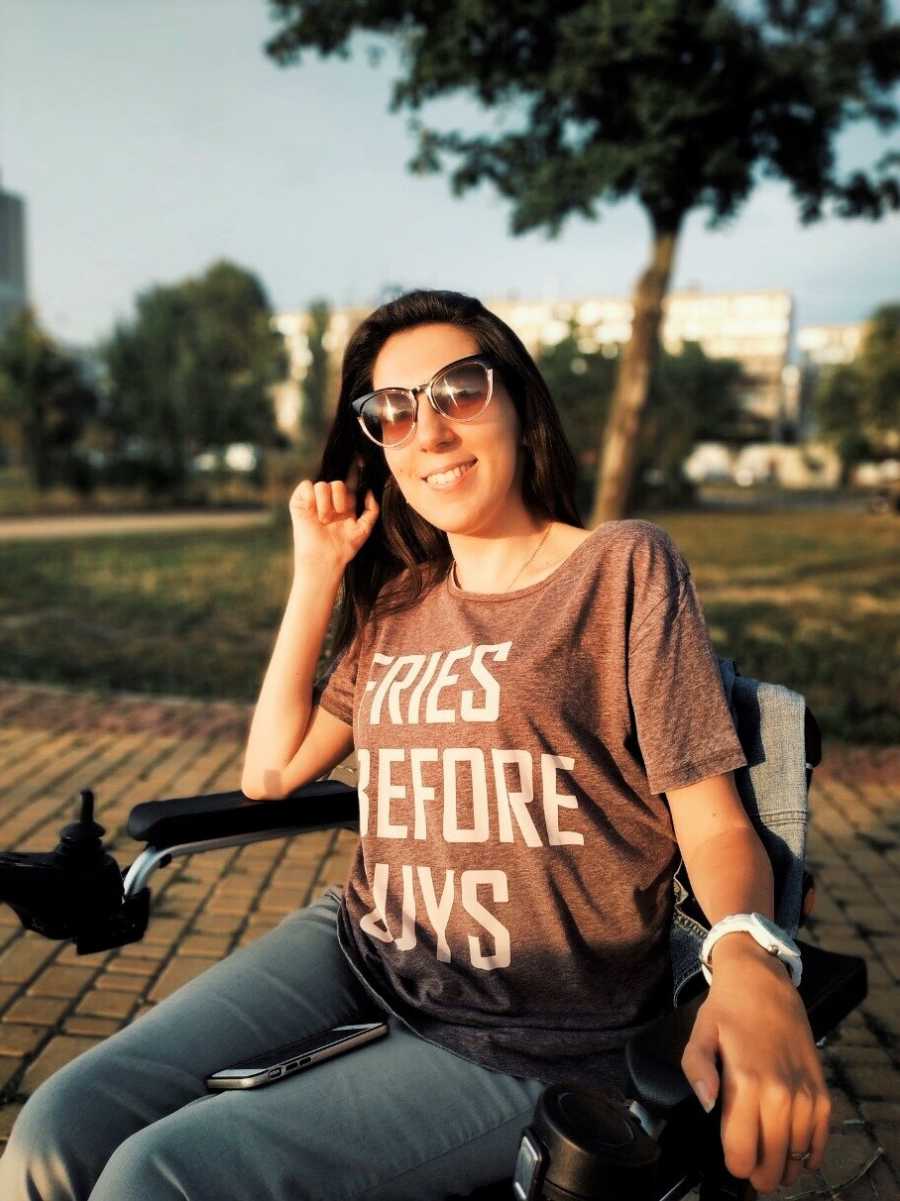
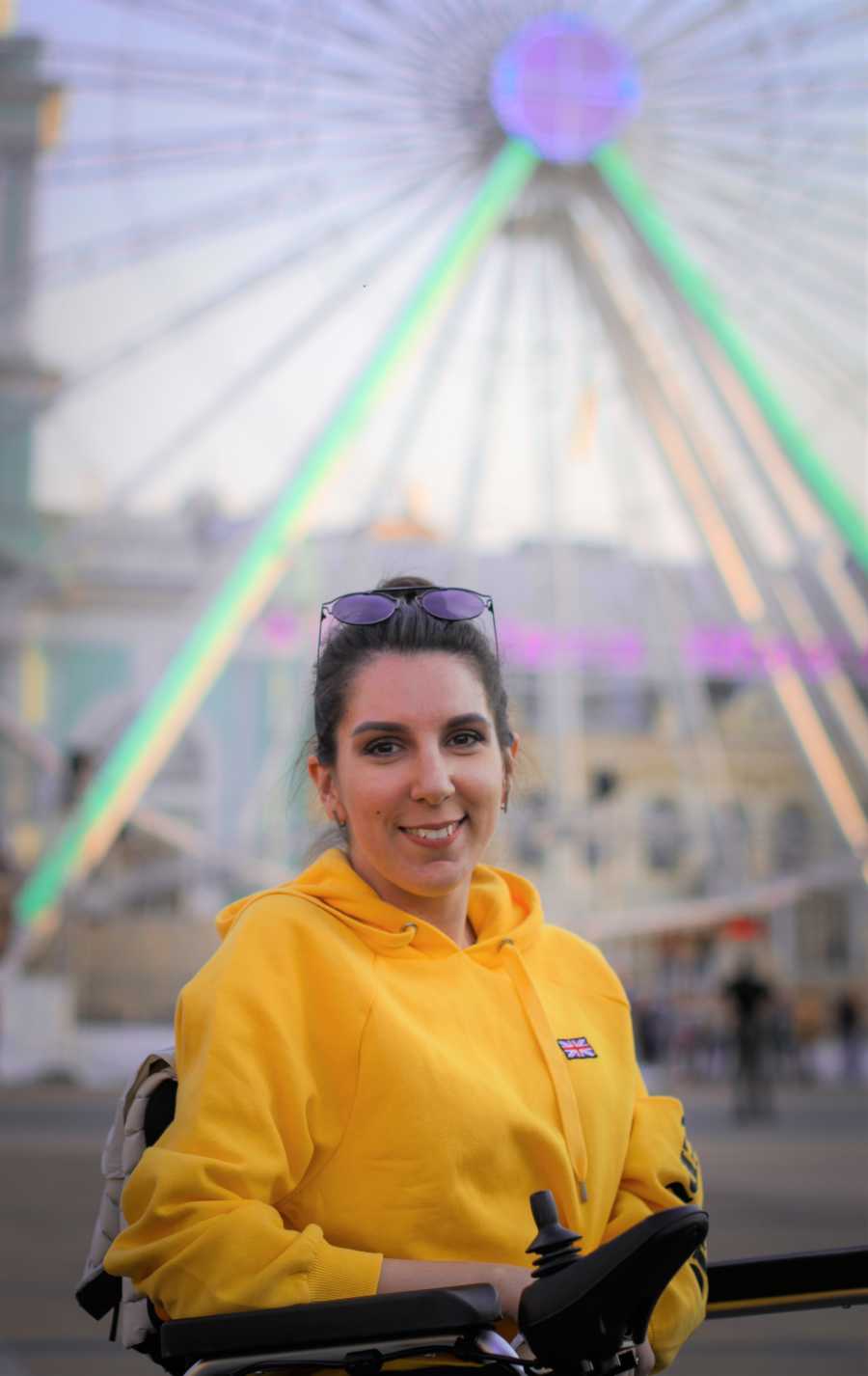
This story was submitted to Love What Matters by Kateryna Smirnova of Kyiv, Ukraine. You can follow her journey on Facebook, Instagram, and on her blog. Do you have a similar grief experience? We’d like to hear your important journey. Submit your own story here, and subscribe to our best stories in our free newsletter here.
Read more stories like this:
Provide hope for someone struggling. SHARE this story on Facebook to let them know a community of support is available.

